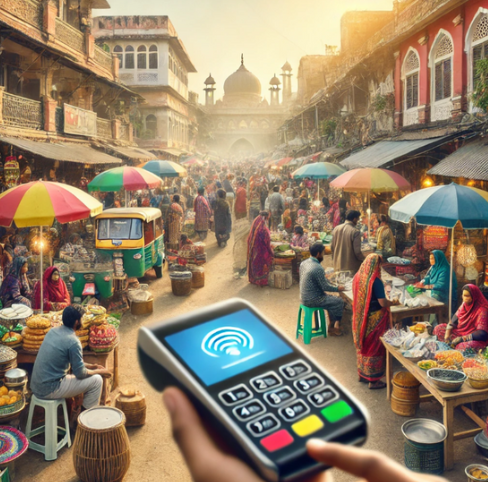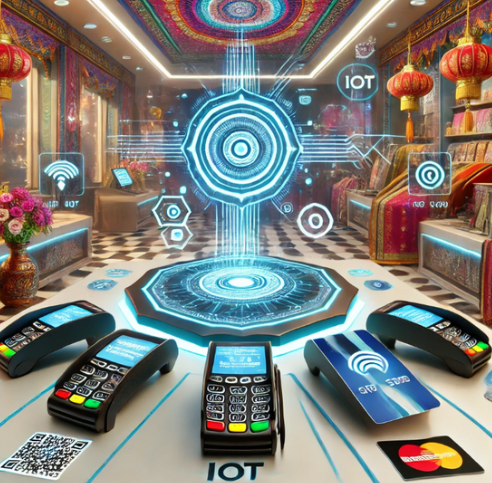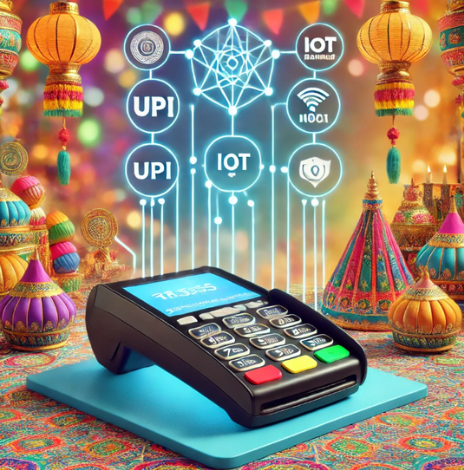AUTHOR-ELIZA FERNZ
Introduction
The Internet of Things (IoT) has emerged as a revolutionary force in multiple industries worldwide, and India is no exception. From smart home devices like thermostats and security cameras to healthcare gadgets and connected cars, IoT devices are becoming increasingly integrated into our daily lives. As this market continues to grow, payment providers are playing a pivotal role in ensuring the seamless purchase, activation, and use of these devices, thereby driving IoT sales across India.

Understanding the IoT Market in India
India’s IoT market is rapidly expanding, driven by technological advancements, increased internet penetration, and a rising middle class. According to a report by Statista, the Indian IoT market(1) is expected to grow significantly in the coming years, with connected devices across various sectors, including smart homes, healthcare, automotive, and industrial automation.
This growth is being fueled by an increasing demand for smart solutions that improve convenience, security, and efficiency.
The Role of Payment Providers in IoT Sales
While the hardware and technology behind IoT devices are critical, the financial transaction aspect is equally important. Payment providers enable smooth, secure, and convenient transactions for purchasing, activating, and maintaining IoT devices. Let’s explore how they contribute to the IoT ecosystem(2) in India.
1. Simplifying Payment Methods
One of the major challenges in the IoT industry(3) is the complexity and cost of purchasing devices. Many IoT devices, especially in the smart home and healthcare sectors, tend to be priced higher than traditional consumer electronics. For example, a high-quality smart security system or a connected health monitor can cost thousands of rupees, making it difficult for the average consumer to purchase them upfront.
2. Offering Financing Options
To make IoT devices more affordable and accessible to a wider audience, many payment providers in India have introduced financing options such as Buy Now Pay Later (BNPL) and Equated Monthly Installments (EMI). These solutions allow consumers to break down the cost of an IoT device into smaller, manageable payments over time.

3. Enabling Cross-Border Payments
India’s IoT market is increasingly being influenced by international brands, with global companies like Amazon, Google, Apple, and Xiaomi driving the adoption of smart home products, wearables, and connected devices. However, many of these devices are priced in foreign currencies and may need to be purchased from international manufacturers or retailers. To facilitate cross-border transactions, payment providers have integrated multi-currency support, secure payment gateways.
4. Security and Trust
Security is a top priority for consumers purchasing IoT devices, as these devices often handle sensitive information like health data, location tracking, and user behavior. Given rising cyber threats, payment providers must invest in fraud detection and cybersecurity to ensure secure transactions. Payment providers in India are continually improving their security infrastructure to protect consumer data and payment details.
5. Subscription Services for Ongoing IoT Device Maintenance
Many IoT devices, particularly those in the smart home and healthcare sectors, require ongoing services such as software updates, cloud storage, and data plans to maintain their functionality. These services often operate on a subscription basis, with recurring payments required to ensure uninterrupted service.
6. Encouraging Local Innovation and IoT Startups
As the IoT market grows in India, payment providers are also supporting local innovation and helping Indian startups enter the IoT space(4). By offering tailored payment solutions that cater to the unique needs of these startups—such as flexible pricing, financing options, and payment integration—payment providers are helping to drive the success of new IoT businesses.

The Future of Payment Providers and IoT in India
As India continues its transition towards a cashless economy, the role of payment providers in the IoT sector(5) will only become more significant. The increasing adoption of digital payments, coupled with the rise of new technologies such as AI, machine learning, and blockchain, will enable payment providers to offer even more innovative solutions for consumers and businesses alike.
Conclusion
Payment providers are key players in the growth of IoT device sales in India. By offering secure, flexible, and innovative payment solutions, they are making it easier for consumers to purchase and maintain IoT devices. From simplifying payments and offering financing options to enabling cross-border transactions and ensuring security, payment providers are helping lay the foundation for a thriving IoT market in India. As the sector evolves, collaboration between payment providers and IoT manufacturers will drive smart device adoption nationwide.
FAQs
1. How do payment providers facilitate IoT device purchases in India?
Payment providers simplify the purchase of IoT devices by offering seamless payment methods such as digital wallets, UPI (Unified Payments Interface), and instant bank transfers.They offer financing options like BNPL and EMI, making IoT devices more affordable for consumers.
2. Why are financing options like BNPL and EMI important for IoT device sales?
Financing options allow consumers to break down the cost of expensive IoT devices into smaller, manageable payments. This makes high-priced IoT products more affordable, especially for those who may not have the means to pay the full amount upfront.
3. Can I purchase IoT devices from global brands using Indian payment methods?
Indian payment providers support cross-border payments with multi-currency transactions, secure gateways, and integration with Visa and MasterCard. This ensures seamless purchases of IoT devices from international brands.
4. How secure are transactions when purchasing IoT devices?
Payment providers invest in encryption, tokenization, and 2FA to ensure transaction security.
These advanced technologies help protect sensitive consumer data, including payment details and personal information, from potential cyber threats.
5. How do subscription services for IoT devices work?
Many IoT devices require subscription-based services, such as software updates, cloud storage, or data plans. Payment providers offer automated billing for recurring payments, ensuring uninterrupted device functionality.




